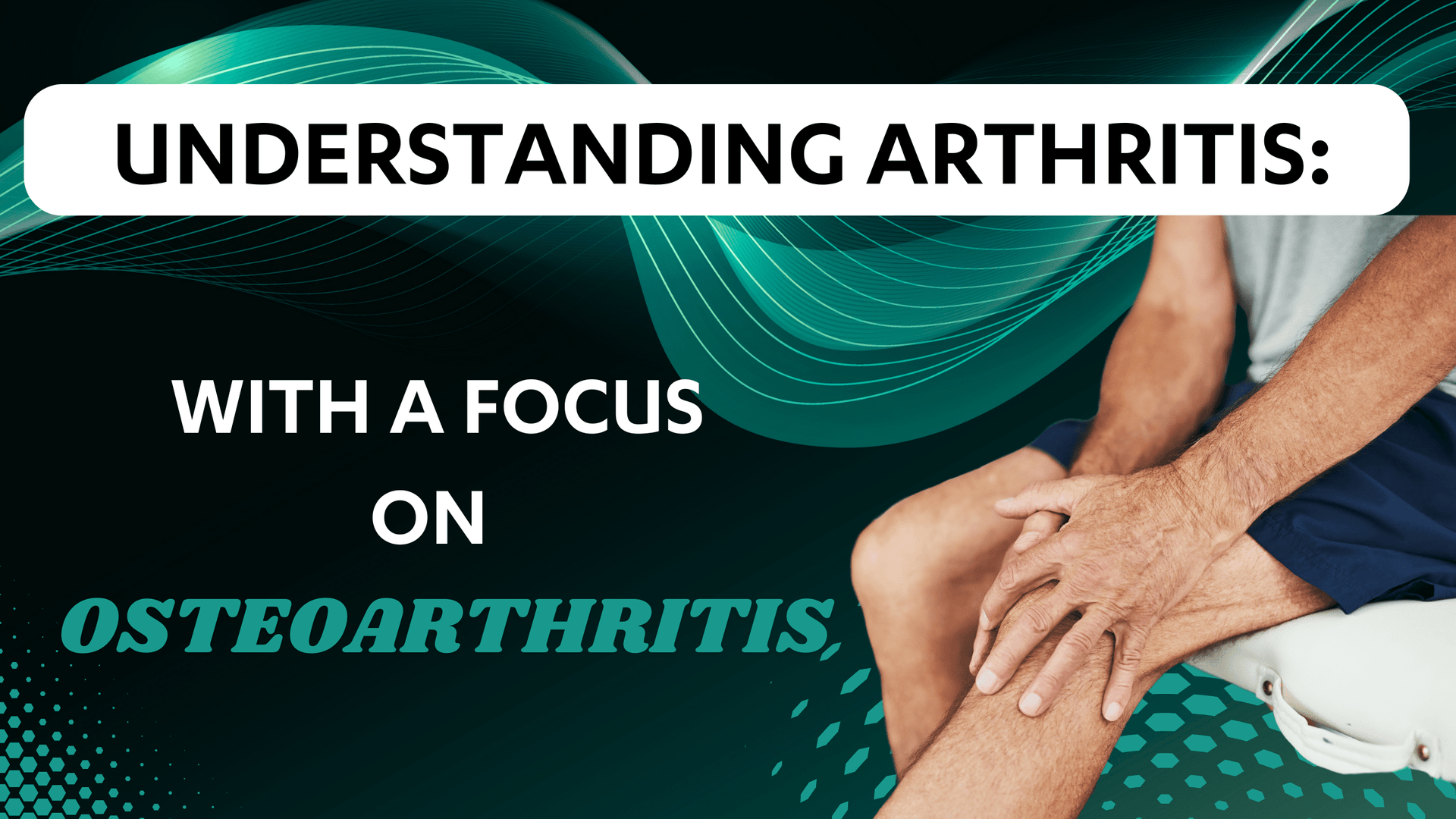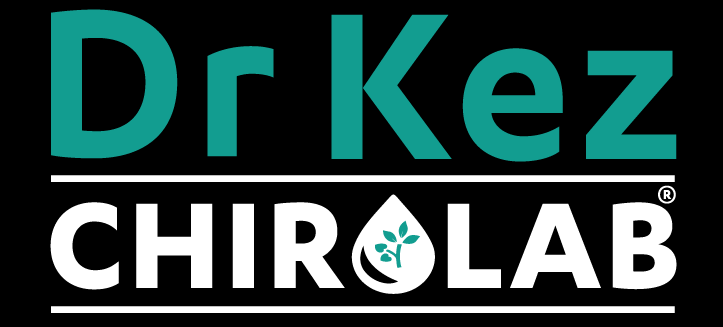
Understanding Arthritis: With a Focus on Osteoarthritis

Arthritis is a term that encompasses over 100 different conditions that affect the joints, causing pain, stiffness, and inflammation. The two most common types of arthritis are osteoarthritis (OA) and rheumatoid arthritis (RA), each with distinct characteristics and treatment approaches. This blog will focus on osteoarthritis, diving into its wear-and-tear nature, and how to alleviate its debilitating effects through muscle relaxation and natural therapies.
Types of Arthritis
Osteoarthritis (OA): Often referred to as "wear-and-tear" arthritis, OA occurs when the protective cartilage that cushions the ends of your bones wears down over time. This condition typically affects weight-bearing joints like the knees, hips, and spine, as well as the hands.
Rheumatoid Arthritis (RA): Unlike OA, RA is an autoimmune disorder where the body's immune system mistakenly attacks the synovial membrane, the lining of the joints, leading to inflammation. This can cause joint deformity and severe pain, often affecting smaller joints first, such as those in the hands and feet.
Other Types: These include psoriatic arthritis, gout, ankylosing spondylitis, and juvenile arthritis, each with unique causes and symptoms.
Osteoarthritis vs. Rheumatoid Arthritis
While both OA and RA affect the joints, their causes and symptoms differ significantly:

Understanding these differences is crucial in determining the appropriate treatment and management for each condition.
What is Osteoarthritis?
Osteoarthritis is a degenerative joint disease characterised by the breakdown of cartilage, the smooth, rubbery tissue that covers the ends of bones where they form a joint. This cartilage acts as a cushion, allowing bones to glide over one another with minimal friction. However, in osteoarthritis, this cartilage wears away, causing bones to rub against each other, leading to pain, swelling, and decreased mobility.
The Wear-and-Tear Nature of Osteoarthritis

Osteoarthritis is often described as a "wear-and-tear" condition because it develops over time due to repetitive stress on the joints. However, it's not just about ageing or overuse. Tight muscles play a significant role in exacerbating the wear and tear on the joints.
When the muscles surrounding a joint become tight, they can pull the bones of the joint closer together, jamming them into one another. This compression increases the pressure on the articular cartilage, which lines the ends of the bones, accelerating its degeneration. The cartilage, which should be smooth and cushioned, begins to wear down, causing the bones to grind together, leading to pain and stiffness.
In addition to the wear on the cartilage, tight muscles also restrict the flow of synovial fluid, the lubricant that helps joints move smoothly. Synovial fluid not only lubricates the joint but also provides essential nutrients to the cartilage, aiding in repair and reducing friction. In arthritic joints, synovial fluid production is often diminished, further contributing to joint degeneration.
The Role of Synovial Fluid

Synovial fluid plays a crucial role in joint health. This thick, slippery fluid is found in the joint cavity and serves several vital functions:
Lubrication: Synovial fluid reduces friction between the cartilage-covered surfaces of the joints, allowing for smooth movement.
Nutrition: It provides nutrients to the cartilage, which lacks a direct blood supply. This helps maintain the health and integrity of the cartilage.
Repair: Synovial fluid contains substances that support the repair and regeneration of joint tissues.
In osteoarthritis, the production of synovial fluid decreases, leading to a lack of lubrication and nutrients, which can exacerbate the wear on the joint and slow down the repair process.
Loosening the Muscles: A Key to Recovery
One of the most effective ways to alleviate the symptoms of osteoarthritis and promote joint healing is to loosen the tight muscles that surround the affected joint. By releasing the tension in these muscles, the bones can move apart, creating a healthier gap in the joint. This not only reduces the pressure on the cartilage but also encourages the production of synovial fluid, which helps nourish and repair the joint.

Cupping therapy and dry needling are two natural therapies that can help release muscle tension and trigger points, which are areas of tight, contracted muscle fibres that can cause pain and restrict movement.
Cupping Therapy: This involves placing cups on the skin to create suction, which helps improve blood flow and release muscle tension. By loosening the muscles around the joint, cupping can reduce the compression on the cartilage, allowing the joint to move more freely and reducing pain. This modality can now be self-applied at home using the Dr. Kez Chirolab Premium Cupping Set, making it easier than ever to maintain muscle flexibility and joint health at your convenience.

Dry Needling: A professional technique where fine needles are inserted into trigger points within the muscle. This helps release the tight knots and relax the muscle, reducing the pressure on the joint, resulting in less wear and tear, and allowing for better movement. This technique needs to be done by a trained professional. For a dry needling session with Dr Kez in Watsonia click HERE.
In addition to these therapies, there are other techniques that can be highly beneficial for releasing muscle tension and supporting joint health:

Stretching: Regular stretching exercises help maintain flexibility and prevent muscles from becoming overly tight. Focus on gentle stretches that target the muscles surrounding the affected joint. Stretching not only improves muscle length but also increases blood flow, bringing essential nutrients to the joint.
Foam Rolling: Foam rolling, also known as self-myofascial release, is a technique where you use a foam roller to apply pressure to tight muscles. This can help break up knots and improve muscle flexibility, reducing the strain on your joints.
Spikey Ball Massage: By using a spikey massage ball, you can get into places the foam roller can’t reach, like in between the shoulder blades or into the muscles at the top of the neck, under the skull. The versatility of the spikey massage ball also allows it to be used with the hand for areas that don’t lend themselves to being leant on the foam roller, like the forearm muscles that contribute to arthritic hands.
Massage Therapy: Regular massage can help relax tight muscles, reduce inflammation, and improve circulation around the joints. Massage therapy, whether done by a professional or through self-massage techniques, can be an effective way to maintain muscle health and support joint function.
By using these therapies to loosen the muscles, you can prevent the tight approximation of the bones in the joint, create more space for the synovial fluid, and reduce the wear and tear on the joint.
The At Home Solution To Arthritis
In addition to working on the muscles using stretching, rolling, spikey ball and cupping, to alleviate the compression of the arthritic joint at home, there are two other great techniques that can offer therapeutic benefit to arthritic joints. The trio of creams and ultrasound therapy offer powerful solutions to support joint healing and relieve pain.


Kirofix® Injury Relief Lotion: This cream provides the essential building blocks for soft tissue repair, including the damaged cartilage that occurs in an arthritic joint. By applying this lotion, you can help the root cause of arthritis heal from the inside out, reducing pain and improving mobility.

Bone Aid Relief Cream: This cream supports the repair of the bones involved in arthritis. Osteoarthritis often leads to bone damage, and this cream works with the body to help strengthen and repair the bones, reducing the impact of the condition.

Heativate® Relief Cream: With active ingredients that increase blood flow to the underlying joint, this cream encourages healing by bringing more nutrients and oxygen to the area. Increased blood flow also helps reduce inflammation and promotes tissue repair, speeding up recovery.

Therapeutic Ultrasound for Home Use - Professional result in the comfort of your own home.

Ultrasound Therapy: Ultrasound therapy has been used for years in clinical practice by Physiotherapists, Chiropractors, Osteopaths etc. Now, with the development of smaller, handheld devices, the benefit of these modalities can be welcomed into the home.
An ultrasound produces high frequency sound waves that can affect the vibration and energy of the cells under the surface of the skin in the local treatment area. By using the ultrasound in conjunction with the trio of creams, it enhances the effects of these creams by driving the active ingredients deep below the surface of the skin, right where the joints need them most. Having the building blocks for healing present while the ultrasound energy waves are exciting the surrounding cells, provides an optimal healing environment for repair and regeneration. This combination of the trio of creams and the therapeutic ultrasound helps reduce pain, improve joint mobility, and support the healing process.
Arthritis Isn't a Life Sentence

As a Doctor of Chiropractic with 20 years of clinical experience, I have witnessed countless patients with arthritis find significant relief by implementing the strategies outlined in this blog. All too often, patients come to me saying they've been told there’s nothing that can be done about arthritis, yet the anecdotal evidence suggests otherwise. Don’t give up on your joints—your body has an incredible capacity to heal itself. We just need to provide it with the right building blocks and environment to give it the best possible chance of doing so, including alleviating the tight muscles that are continuously aggravating the joints. By taking proactive steps, you can reclaim your mobility and improve your quality of life.
Osteoarthritis is a debilitating condition that affects millions of people worldwide, but understanding its causes and implementing effective treatments can make a significant difference. By addressing the tight muscles that contribute to joint wear, using therapies like cupping, dry needling, stretching, rolling, and massage, and supporting the healing process with the Dr. Kez Chirolab Trio of Creams and Therapeutic Ultrasound therapy, you can take control of your joint health and reduce the impact of osteoarthritis. Healing at home is possible, and these natural treatments offer a path to recovery and relief from the pain and stiffness of arthritis. If symptoms persist, seek professional guidance to further support your journey to better joint health.










